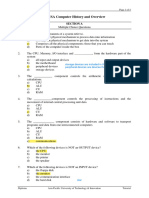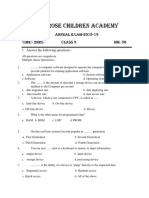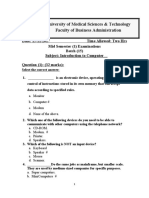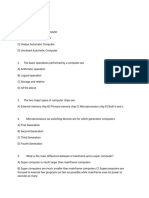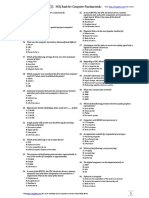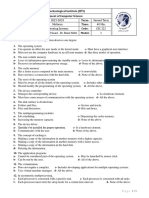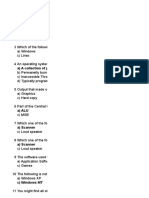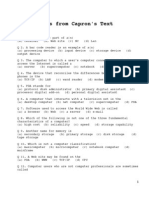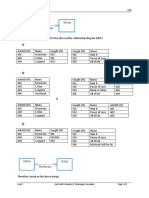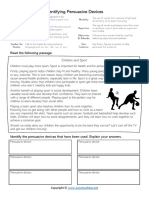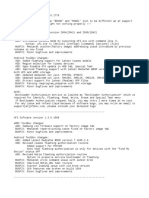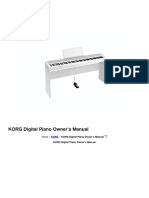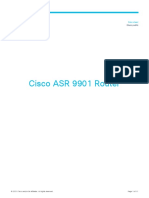0% found this document useful (0 votes)
212 views8 pagesTS1. Computer History Overview-OSCA
This document contains a 34 multiple choice question quiz about operating systems and computer architecture. The questions cover topics such as hardware components, the CPU, memory, input/output devices, storage, units of measurement for storage, the stored program concept, operating systems, networking, the history and development of computers, and common computer components. The final question asks students to identify benefits of understanding computer system operation.
Uploaded by
Sadiqu ZzamanCopyright
© © All Rights Reserved
We take content rights seriously. If you suspect this is your content, claim it here.
Available Formats
Download as DOC, PDF, TXT or read online on Scribd
0% found this document useful (0 votes)
212 views8 pagesTS1. Computer History Overview-OSCA
This document contains a 34 multiple choice question quiz about operating systems and computer architecture. The questions cover topics such as hardware components, the CPU, memory, input/output devices, storage, units of measurement for storage, the stored program concept, operating systems, networking, the history and development of computers, and common computer components. The final question asks students to identify benefits of understanding computer system operation.
Uploaded by
Sadiqu ZzamanCopyright
© © All Rights Reserved
We take content rights seriously. If you suspect this is your content, claim it here.
Available Formats
Download as DOC, PDF, TXT or read online on Scribd
/ 8
